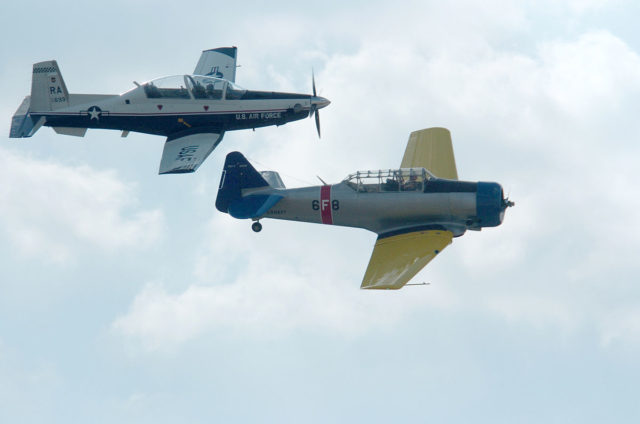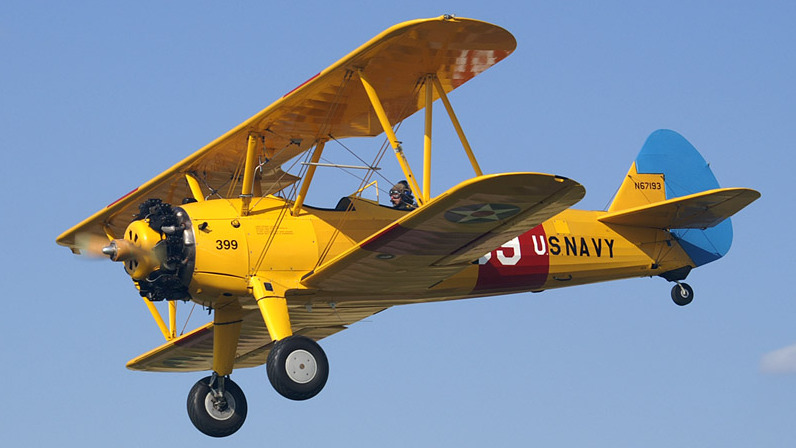Today’s modern air flights mainly consist sitting in a cramped seat and looking out of a tiny window. But flyers in Central Oregon had the opportunity to fly like the adventure-seekers of yesteryear.
Sunriver Resort hosted the Erickson Aircraft Collection, where the adventurous could fly in authentic WWII warplanes for $150-$250. The difference in cost reflected the length of the flight and the type of plane.
Jim Martinelli is a pilot for Erickson Aircraft. He said that the flights allow people to experience what they’ve only read about or seen in movies and that the general thing is to experience an open cockpit biplane, to experience that thrill and feel of the 1930s, 1920s barnstorming aviation. The wind’s right in your face.
That experience is specific to the PT-17 Stearman, the WWII biplane trainer that puts the riders in the front seat. Nowadays, most people think of these planes as crop dusters, but it was the first plane war pilots trained in, according to Michelle Forster, the assistant manager at Erickson Aircraft.
“These warbirds are tough to fly, and they made them that way so that if you get in any situation you know how to get out of it. That’s why pilots spent so much time on these trainers. As military pilots learned how to fly, they would start with the primary trainer, the Stearman. Once they got comfortable in that and passed a few tests, then they would move on to the Texan,” she added.
Another warbird flying in the Sunriver flight is the T-6 Texan. This is the WWII plane often associated with the war in films and paintings. Both planes are trainers with dual cockpits and steering. Foster said that it’s not unlike the instructor’s brake in a driver’s education car. “The purpose was if you’re learning to fly and you make a mistake, the pilot can correct it,” she said.

The controls don’t get used much these days, but the Erickson maintenance team keeps them in working order, just like the rest of the plane. A full-time maintenance team performs annual check-ups. They manufacture out-of-production parts and keep the planes ready to fly.
Martinelli said that there’s not much difference between flying modern aircraft and flying these vintage machines, but it’s the same thing as driving a 1935 car versus driving a 2016 car. “Like the Stearman, for example, It’s old, it’s shaky and clunky, it throws oil at you, the wind’s in your hair, it smokes, stuff like that. But it still flies great,” he added.
There are currently 24 planes in the Erickson Aircraft Collection. This includes Korean and Vietnam War-era planes. Only two of the planes can’t fly. They make appearances at air shows around the country.
The collection started by Jack Erickson in 1983. He kept the planes in a hangar in Tillamook for 20 years. Structural issues led to the collection being moved to Madras two years ago.
“It came to a point where the building was leaking and causing corrosion on the planes, and we decided we either need to build something inside the building or find a new location. The drier weather, extra sunshine, and the open airspace at the Madras airport allows us to fly our birds anytime during the daylight,” stated Foster.
“We are, what I like to say, not necessarily a museum of artifacts but a flying collection. We try to keep the history alive by allowing passengers to go up on these planes,” she said.
The museum also allowed visitors to view the planes or “soar with the warbirds.” The flights made a unique facet of the collection. Visit the Erickson Aircraft Collection Website to find out more.
